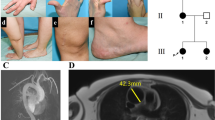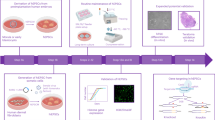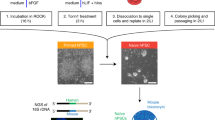Abstract
Efs was originally found by expression cloning of a mouse embryo cDNA library through its Fyn-SH3 binding capacity (Ishino et al., Oncogene 11, 2331 – 2338, 1995). Efs has characteristic regions important in intracellular signal transduction; these are an SH3 domain, a cluster of putative ligands for SH2 domains and proline-rich sequences with SH3-binding consensus. In this paper, we report cDNA cloning of human Efs and a variant of it from a hippocampal cDNA library. The human Efs gene was mapped to chromosome 14q11.2-q12 by fluorescence in situ hybridization. We identified two forms of human Efs, designated hEfs1 and hEfs2. hEfs1 represents the human counterpart of original mouse embryo Efs (mEfs1). hEfs2, the newly identified form, is identical to hEfs1, except for its lack of the SH3 domain. hEfs1 and mEfs1 are 80% identical in their amino acid sequences and 100% identical within the SH3 domain. Reverse transcription polymerase chain reaction analysis of adult mouse tissue RNA indicated expression of Efs2 and of Efs1 in various tissues. Evidence suggesting the presence of the Efs2 protein in human tissue was obtained by immunoprecipitation followed by immunoblotting with two different anti-Efs antibodies. Possible functions of Efs2 are discussed.
This is a preview of subscription content, access via your institution
Access options
Subscribe to this journal
Receive 50 print issues and online access
$259.00 per year
only $5.18 per issue
Buy this article
- Purchase on SpringerLink
- Instant access to full article PDF
Prices may be subject to local taxes which are calculated during checkout
Similar content being viewed by others
Author information
Authors and Affiliations
Rights and permissions
About this article
Cite this article
Ishino, M., Ohba, T., Inazawa, J. et al. Identification of an Efs isoform that lacks the SH3 domain and chromosomal mapping of human Efs. Oncogene 15, 1741–1745 (1997). https://doi.org/10.1038/sj.onc.1201346
Received:
Revised:
Accepted:
Issue date:
DOI: https://doi.org/10.1038/sj.onc.1201346
Keywords
This article is cited by
-
CAS proteins in normal and pathological cell growth control
Cellular and Molecular Life Sciences (2010)



